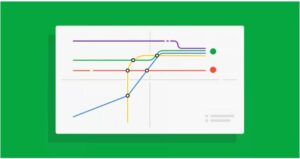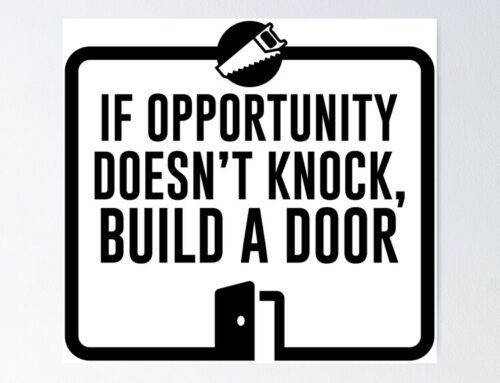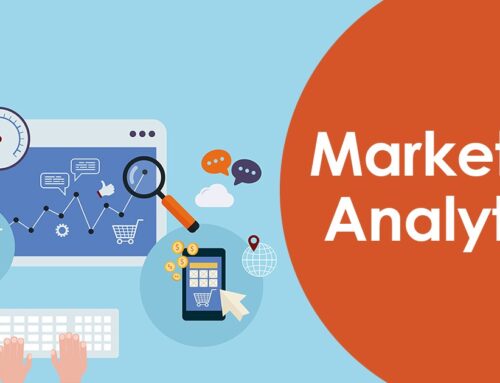
What is a sales pipeline and how do you build one?
‘Sales pipeline’ is one of those sales terms that gets thrown around a lot. If you spend any time in sales circles, you’ll often hear about “getting prospects into the pipeline”, “increasing your pipeline” and “filling your pipeline with hot leads”.
It can be easy to forget that “pipeline” is more than just a buzzword. Instead, it’s an important sales tool for any sales management operation, and it can make a significant difference to your bottom line.
The stages of a sales pipeline can help you and your team better understand your sales process. This visual representation portrays where in the sales funnel your deals are located, where deals are stalling and which sales activities are contributing to reps closing deals and bringing in the most revenue.
If you aren’t using a sales pipeline, you may lack valuable insights about how effective your sales process is and where your deals are at any given time.
In this article, we’ll explain what sales pipelines are, break down the sales pipeline stages, explain how sales pipeline management can help you hit more of your sales targets and show you how to build your own.
What is a sales pipeline?
A sales pipeline is an organized, visual way of tracking potential buyers as they progress through different stages in the purchasing process and buyer’s journey.
Often, pipelines are visualized as a horizontal bar (sometimes as a funnel) divided into the various stages of a company’s sales process. Leads and prospects are moved from one stage to the next as they maneuver through the sales process (e.g. when reps receive a response to outreach like a cold email or when a potential customer is marked as a qualified or unqualified lead).
Sales pipeline stages add a layer of accountability and make sales goals easier to achieve by breaking the sales process down into small, trackable tasks.
With a pipeline, salespeople are able to see exactly where their money, deals and other sales efforts are at all times. This is vital, given that salespeople are often juggling many sales prospects and deals and can’t afford to let anything slip through the cracks.
It’s also a powerful tool for sales managers who want to collate and analyze data on how well their sales process is working, or not, so that they can optimize it accordingly. As a sales pipeline tracks a salesperson’s activities, it offers visibility into which sales activities are giving a company the greatest return.
“Companies don’t know what their possibilities are,” says Michelle Seger, a partner at Atlanta-based SalesGlobe. “If you can actually look at your activities, how long they’ve been there and what are your conversion rates, it tells you where you are and what’s not working.”
What you’ll need before you start building your own pipeline
Given that a sales pipeline is such an important sales tool, you should take care to build it properly. Make sure you have specific information about your company, sales team, existing customers, target audience, target market, product and pricing before you begin assembling one.
Here are some of the basic things you should have on hand before you start building each stage of the sales pipeline:
A list of your prospects
The first thing you’ll need is a list of prospects that fit your target audience and ideal customer profile (ICP) that have a need (and budget) for the product or service you’re selling. This list should align with your buyer personas and be as detailed as possible.
This includes names, contact information, their company (including the industry and size of their business), their position at work, whether or not they’re a decision-maker, how you first made contact with them (or vice versa), their pain points and challenges, etc.
If they’re already talking to you, try to assign them a rough pipeline stage. Don’t worry about getting this part wrong as you can adjust these stages later.
Your sales process
A sales process is a clear, structured, step-by-step formula that tells your team exactly what sales activities they need to conduct to close a deal. A good sales process empowers your sales reps to repeatedly win deals simply by following the steps and activities in their workflows.
If your team already has a defined sales process, great news: you’ve more than likely got the steps of your pipeline outlined. If not, don’t worry. As you build each stage of the pipeline, which we will explore in the next section, you’ll be able to map out your sales process in tandem.
Your revenue targets
Your lead pipeline is a tool that will help you meet your revenue goals. Thus, in order to design a successful pipeline, you’ll need to have your goals on hand.
Those numbers will eventually help you answer an important question: How many deals do you need to add to your pipeline to reach your objectives? If you know how many of your qualified leads convert into new customers, for example, you can easily calculate the number of deals you need in each of the early pipeline stages.
Your colleagues
A sales pipeline helps to improve both individual and teamwide task management and tracking. Since everyone on your sales team will be using the same pipeline, you should include your team members in the decision-making process as you build it.
This way, everybody has a chance to offer their opinions and advice, which in turn will make your sales pipeline a more effective tool for collaboration, communication and project management.
What the stages of your sales pipeline should be
No two businesses are exactly the same and neither are all sales pipelines. Some organizations use a five-step pipeline, others incorporate as many as eight stages and some swear by seven stages.
The number and type of stages in your sales pipeline depend on several factors, including how you contact leads and the type of product or service you sell. For example:
Salespeople that sell SaaS tools will often have a sales presentation stage where they demonstrate their product to prospects
B2B sales professionals are known for implementing buyer personas before reaching out
Car salespeople will have a test drive stage at some point in their pipeline
A real estate agent’s pipeline will likely contain a house viewing
Below are some of the stages common to most sales lead pipelines, with an explanation of what each stage means.
Prospecting
Every organization prospects differently, depending on its clients, products and organizational structure. For instance, you may have a lead generation team devoted entirely to sourcing new leads, or you may primarily generate leads via marketing campaigns that leverage downloadable content, social media engagement and email marketing.
Regardless of how you go about it, the first stage in any pipeline is always the same: finding prospective buyers who need what you’re selling.
Qualifying
Qualifying (also called “research”) in lead pipelines is all about finding prospects who are the right fit for what you’re selling. Occasionally, lead qualification comes later in the process, after a rep has made contact with a potential new customer.
Lead qualification is an invaluable step, because you don’t want your sales professionals wasting their time on leads who can’t or won’t buy your product, or who might be the wrong fit and cause problems down the line. In this step, you’ll analyze fit via lead scoring and separate hot sales qualified leads from cold opportunities.
Qualifying leads is all about answering the following questions:
Does your prospect have the budget for your product?
Can the prospect actually make the decision to purchase, or do they need to convince someone else?
Do they truly need your product?
Do they seem ready to buy now?
If you get one or more negative responses, that lead might not be a good fit for your product or service. In other words, they’re probably cold.
There’s nothing wrong with cold leads, you just don’t want to keep them in your pipeline. Instead, save their contact information (or move them to another category if you’re using a CRM with multiple pipelines) and move on.
Approximately 20% of your leads are going to provide 80% of your revenue (according to the Pareto Principle). If you find a prospect who has been clogging your pipeline up for longer than your typical sales cycle, put the prospect in a different category, such as a future pipeline or a future callback list, and set a reminder to follow-up down the line to see if circumstances have changed.
You can also save some time by automating this process with a deal-rotting feature in a CRM.
Contacting
This step is pretty straightforward. In this stage, a salesperson makes first contact with a prospect. This might be done over the phone, via email, through social media, a text message or an in-person chat.
Make sure you’ve been thorough in the qualifying stage and done your due diligence before contacting prospects. Use the actionable information you’ve collected to focus your approach when targeting segments.
Try out our cold calling sales scripts to start engaging leads and developing connections.
Building relationships
It’s not enough to simply sell to the customer. You need to demonstrate that you’re mindful of your prospect’s needs from the initial contact onward.
Your reps should be nurturing potential buyers and building relationships with them at every single stage in the buyer’s journey.
Lead nurturing doesn’t mean your reps should annoy your clients by calling or emailing them constantly. It may simply be forwarding an article that applies to the prospect’s unique issues, or liking their posts on LinkedIn. It could be as simple as honestly listening to objections and responding. The goal is to build trust with your prospects so they’ll feel comfortable buying from you.
This part of the pipeline usually stretches across a number of stages, depending on how many touch points leads and prospects need to be converted into customers.
Closing
Once your reps have made contact, explained your product and built trust, it’s time to finalize the deal.
How do you ask for a sale? Well, that depends a lot on your reps, organization and customers. Sometimes the customer says ‘yes’ outright. In some cases, you might need to make concessions in order to make a sale, but you should always be okay with those specific concessions in advance.
If a customer disappears right before a deal, make a few attempts at contact, and then send a message explaining that you realize it may not be a good time and that they can reach out when they’re ready.
Then, mark that contact as a cold lead.
There’s nothing wrong with cold leads, you just don’t want to keep them in your pipeline. Instead, save their contact information (or move them to another category if you’re using a CRM with multiple pipelines) and move on.
Approximately 20% of your leads are going to provide 80% of your revenue (according to the Pareto Principle). If you find a prospect who has been clogging your pipeline up for longer than your typical sales cycle, put the prospect in a different category, such as a future pipeline or a future callback list, and set a reminder to follow-up down the line to see if circumstances have changed.
You can also save some time by automating this process with a deal-rotting feature in a CRM.
Contacting
This step is pretty straightforward. In this stage, a salesperson makes first contact with a prospect. This might be done over the phone, via email, through social media, a text message or an in-person chat.
Make sure you’ve been thorough in the qualifying stage and done your due diligence before contacting prospects. Use the actionable information you’ve collected to focus your approach when targeting segments.
Try out our cold calling sales scripts to start engaging leads and developing connections.
Building relationships
It’s not enough to simply sell to the customer. You need to demonstrate that you’re mindful of your prospect’s needs from the initial contact onward.
Your reps should be nurturing potential buyers and building relationships with them at every single stage in the buyer’s journey.
Lead nurturing doesn’t mean your reps should annoy your clients by calling or emailing them constantly. It may simply be forwarding an article that applies to the prospect’s unique issues, or liking their posts on LinkedIn. It could be as simple as honestly listening to objections and responding. The goal is to build trust with your prospects so they’ll feel comfortable buying from you.
This part of the pipeline usually stretches across a number of stages, depending on how many touch points leads and prospects need to be converted into customers.
Closing
Once your reps have made contact, explained your product and built trust, it’s time to finalize the deal.
How do you ask for a sale? Well, that depends a lot on your reps, organization and customers. Sometimes the customer says ‘yes’ outright. In some cases, you might need to make concessions in order to make a sale, but you should always be okay with those specific concessions in advance.
If a customer disappears right before a deal, make a few attempts at contact, and then send a message explaining that you realize it may not be a good time and that they can reach out when they’re ready.
Then, mark that contact as a cold lead.
Following up with cold leads
Speaking of which, contacting cold leads should also be a stage in your pipeline. Just because they weren’t ready to buy when they were first contacted doesn’t mean they’re not ready to buy now.
Check in periodically to see how they are and what they’re up to (this is also part of the building relationships step). You never know; they may now have the budget, authority or need that they didn’t have before.
It’s also a good opportunity to review your approach throughout the previous stages. Many leads might still be cold simply because you haven’t properly communicated their problem and clearly explained your solution.
Article by PipeDrive

206-391-5682
i2i@i2idirectmarketing.com
www.i2idirectmarketing.com
“…all deliveries GPS tracked…”




